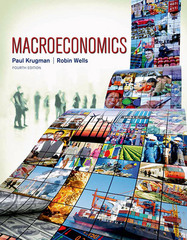Please help
Consider a community that has 30 individuals. All individuals in this community earn the same wage per hour, w = 4. Each individual is endowed with 1 hour and derives utility a In(1 - h) when he works h hours. That is, a In(1 - h) is the utility from leisure time. Individuals differ in their utility from leisure. There are 10 type I individuals with a = 6, 10 type II individuals with a = 3 and 10 type Ill individuals with a = 1. Suppose people maximize their after-tax labor income plus their utility of leisure. Thus, each individual solves maxhelo,1 (1 - T)wh + aln(1 - h). where T is the tax rate (1) Derive optimal labor supply, as a function of the tax rate 7, for each type of worker. (2) What is the tax rate, 7* , that maximizes the total tax revenue? hs (3) At the revenue maximizing rate, 7* , which type(s) work, and how much? (4) What is total tax revenue at the revenue maximizing rate T* (5) Explain why, in policy debate, many people focus on the possibility that policy sets rates higher than T* .In 2005, the U.S. Federal Government offered a $2,650 subsidy to anyone who purchased a new hybrid automobile over the next two years. The subsidy took the form of a refundable credit. In effect, the government would write a check for $2,650 to anyone who purchased a new hybrid. At the time, the Toyota Prius was effectively the only mass-produced hybrid available on the market in the US. Imagine it is 2005 and you are working at the White House. Your boss asks you to explain the "incidence" of this federal subsidy for purchasing a Prius. (1) First, explain to your boss what economists mean by the "economic incidence" of this subsidy. Your explanation should make clear how the economic incidence may differ from the "statutory incidence" of this subsidy. Demand for the Prius is, as usual, downward sloping (lower prices mean more demand). But the short-run supply of the Prius is very inelastic because it takes time to ramp up production. The equilibrium price without the subsidy was $25,000. (2) Draw a supply curve and a demand curve without the subsidy for the Prius in a figure with prices on the vertical axis and quantities on the horizontal. Label the supply curve S, and label your demand curve D (3) Add to your figure demand for the Prius WITH the subsidy. Label this second demand curve D- prime. (4) Label on your figure the size of the subsidy. (5) Label on your figure the economic incidence of the subsidy that goes to consumers. (6) Explain why, for purposes of calculating the economic incidence of the subsidy that that you can safely ignore any changes in quantity sold that result from the subsidy. (7) Suggest a policy that might increase the incidence of this subsidy that goes to consumers. Upload Choose a File O O 9 F3 -O- PrtSon Home End F2








